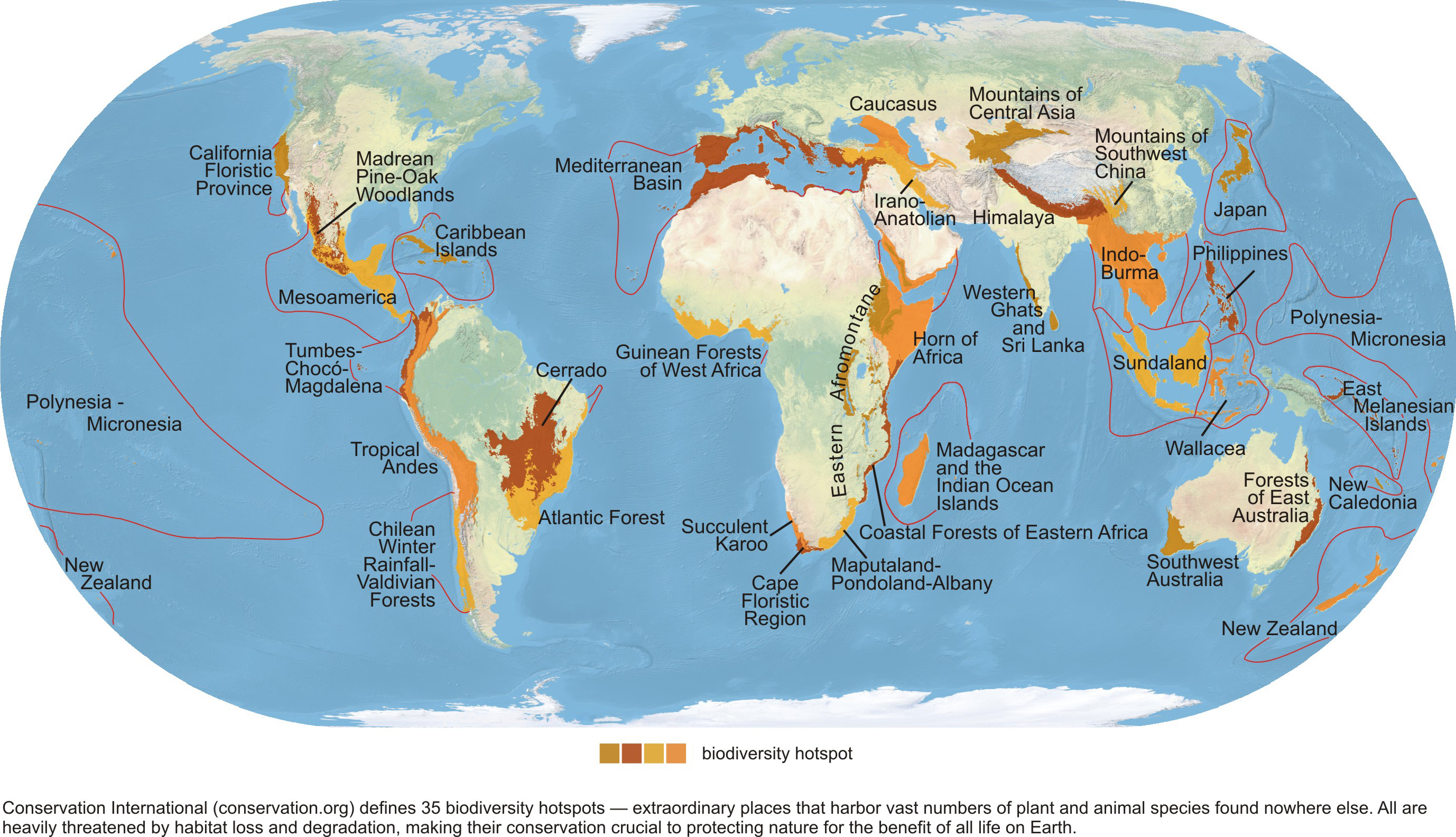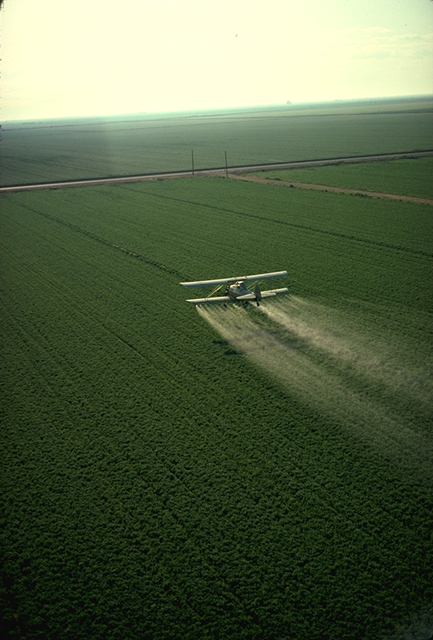|
Strabomantis Necerus
''Strabomantis necerus'', also known as the Mindo robber frog or hornless groundfrog, is a species of frog in the family Strabomantidae. It is found on the lower Pacific slopes of the Andes from Cotopaxi Province northward to Carchi Province, Ecuador, and Valle del Cauca Department, Colombia. It is a rare frog inhabiting humid premontane forest, typically in the immediate vicinity of streams. It is threatened by habitat loss caused by agriculture and logging; agricultural pollution Agricultural pollution refers to biotic and abiotic byproducts of farming practices that result in contamination or degradation of the environment and surrounding ecosystems, and/or cause injury to humans and their economic interests. The pol ... is also a threat. ''Strabomantis necerus'' has not been seen in Ecuador since 1995 and might be extinct there. Colombian record is based on re-examining a series of museum specimens, where it had been mixed with '' Strabomantis bufoniformis''; the curre ... [...More Info...] [...Related Items...] OR: [Wikipedia] [Google] [Baidu] |
Frog
A frog is any member of a diverse and largely carnivorous group of short-bodied, tailless amphibians composing the order Anura (ανοὐρά, literally ''without tail'' in Ancient Greek). The oldest fossil "proto-frog" '' Triadobatrachus'' is known from the Early Triassic of Madagascar, but molecular clock dating suggests their split from other amphibians may extend further back to the Permian, 265 million years ago. Frogs are widely distributed, ranging from the tropics to subarctic regions, but the greatest concentration of species diversity is in tropical rainforest. Frogs account for around 88% of extant amphibian species. They are also one of the five most diverse vertebrate orders. Warty frog species tend to be called toads, but the distinction between frogs and toads is informal, not from taxonomy or evolutionary history. An adult frog has a stout body, protruding eyes, anteriorly-attached tongue, limbs folded underneath, and no tail (the tail of tailed frogs ... [...More Info...] [...Related Items...] OR: [Wikipedia] [Google] [Baidu] |
Strabomantidae
The Strabomantidae are a family of frogs native to South America. These frogs lack a free-living larval stage and hatch directly into miniature "froglets". This family includes ''Pristimantis'', the most speciose genus of any vertebrate. Systematics The following subfamilies and genera are in the family Strabomantidae. *Holoadeninae **''Bahius'' Dubois, Ohler, and Pyron, 2021 **''Barycholos'' Heyer, 1969 **'' Bryophryne'' Hedges, Duellman, and Heinicke, 2008 **'' Euparkerella'' Griffiths, 1959 **''Holoaden'' Miranda-Ribeiro, 1920 **''Microkayla'' De la Riva, Chaparro, Castroviejo-Fisher, and Padial, 2017 **'' Noblella'' Barbour, 1930 **'' Psychrophrynella'' Hedges, Duellman, and Heinicke, 2008 **''Qosqophryne'' Catenazzi, Mamani, Lehr, and von May, 2020 *Hypodactylinae **''Niceforonia'' Goin and Cochran, 1963 *Pristimantinae **''Lynchius'' Hedges, Duellman, and Heinicke, 2008 **'' Oreobates'' Jiménez de la Espada, 1872 **'' Phrynopus'' Peters, 1873 **''Pristimantis ''Prist ... [...More Info...] [...Related Items...] OR: [Wikipedia] [Google] [Baidu] |
Andes
The Andes, Andes Mountains or Andean Mountains (; ) are the longest continental mountain range in the world, forming a continuous highland along the western edge of South America. The range is long, wide (widest between 18°S – 20°S latitude), and has an average height of about . The Andes extend from north to south through seven South American countries: Venezuela, Colombia, Ecuador, Peru, Bolivia, Chile, and Argentina. Along their length, the Andes are split into several ranges, separated by intermediate depressions. The Andes are the location of several high plateaus—some of which host major cities such as Quito, Bogotá, Cali, Arequipa, Medellín, Bucaramanga, Sucre, Mérida, El Alto and La Paz. The Altiplano plateau is the world's second-highest after the Tibetan plateau. These ranges are in turn grouped into three major divisions based on climate: the Tropical Andes, the Dry Andes, and the Wet Andes. The Andes Mountains are the highest mountain ra ... [...More Info...] [...Related Items...] OR: [Wikipedia] [Google] [Baidu] |
Cotopaxi Province
Cotopaxi () is one of the provinces of Ecuador. The capital is Latacunga. The province contains the Cotopaxi Volcano, an intermittent volcano with a height of . Cantons The province is divided into 7 cantons. The following table lists each canton with its population (per the 2001 census), its area in square kilometres (km2), and the name of the canton seat (capital). Demographics Ethnic groups as of the Ecuadorian census of 2010: *Mestizo 72.1% *Indigenous 22.1% *White 2.3% *Montubio 1.8% *Afro-Ecuadorian 1.7% *Other 0.1% See also * Cotopaxi National Park * Llanganates National Park * Panzaleo (ethnic group) * Provinces of Ecuador * Cantons of Ecuador The Cantons of Ecuador are the second-level subdivisions of Ecuador, below the provinces. There are 221 cantons in the country, of which three are not in any province. The cantons are further sub-divided into parishes, which are classified as ... * Centro de Levantamientos Integrados de Recursos Naturales p ... [...More Info...] [...Related Items...] OR: [Wikipedia] [Google] [Baidu] |
Carchi Province
Carchi () is a province in Ecuador. The capital is Tulcán. The Carchi River rises on the slopes of Chiles volcano and forms the boundary between Colombia and Ecuador near Tulcan. Rumichaca Bridge is the most important land route between Colombia and Ecuador. Economy The provincial economy is based on industrial, and agriculture productions. Carchi produces food, drinks, tobacco, and dairy products. The agriculture sector produces potatoes, maize, etc. Cantons The province is divided into 6 cantons. The following table lists each with its population at the 2010 census, its area in square kilometres (km²), and the name of the canton seat or capital. Demographics Ethnic groups as of the Ecuadorian census of 2010: *Mestizo 86.9% *Afro-Ecuadorian 6.4% * Indigenous 3.4% *White 2.9% *Montubio 0.3% *Other 0.1% Tourist destinations * Tulcán Cemetery - topiary garden cemetery; * El Ángel ecological reserve, El Ángel - extensive páramo ecosystem with diverse ... [...More Info...] [...Related Items...] OR: [Wikipedia] [Google] [Baidu] |
Montane Forest
Montane ecosystems are found on the slopes of mountains. The alpine climate in these regions strongly affects the ecosystem because temperatures fall as elevation increases, causing the ecosystem to stratify. This stratification is a crucial factor in shaping plant community, biodiversity, metabolic processes and ecosystem dynamics for montane ecosystems. Dense montane forests are common at moderate elevations, due to moderate temperatures and high rainfall. At higher elevations, the climate is harsher, with lower temperatures and higher winds, preventing the growth of trees and causing the plant community to transition to montane grasslands, shrublands or alpine tundra. Due to the unique climate conditions of montane ecosystems, they contain increased numbers of endemic species. Montane ecosystems also exhibit variation in ecosystem services, which include carbon storage and water supply. Life zones As elevation increases, the climate becomes cooler, due to a decrease ... [...More Info...] [...Related Items...] OR: [Wikipedia] [Google] [Baidu] |
Habitat Loss
Habitat destruction (also termed habitat loss and habitat reduction) is the process by which a natural habitat becomes incapable of supporting its native species. The organisms that previously inhabited the site are displaced or dead, thereby reducing biodiversity and species abundance. Habitat destruction is the leading cause of biodiversity loss. Fragmentation and loss of habitat have become one of the most important topics of research in ecology as they are major threats to the survival of endangered species. Activities such as harvesting natural resources, industrial production and urbanization are human contributions to habitat destruction. Pressure from agriculture is the principal human cause. Some others include mining, logging, trawling, and urban sprawl. Habitat destruction is currently considered the primary cause of species extinction worldwide. Environmental factors can contribute to habitat destruction more indirectly. Geological processes, climate change, ... [...More Info...] [...Related Items...] OR: [Wikipedia] [Google] [Baidu] |
Agricultural Pollution
Agricultural pollution refers to biotic and abiotic byproducts of farming practices that result in contamination or degradation of the environment and surrounding ecosystems, and/or cause injury to humans and their economic interests. The pollution may come from a variety of sources, ranging from point source water pollution (from a single discharge point) to more diffuse, landscape-level causes, also known as non-point source pollution and air pollution. Once in the environment these pollutants can have both direct effects in surrounding ecosystems, i.e. killing local wildlife or contaminating drinking water, and downstream effects such as dead zones caused by agricultural runoff is concentrated in large water bodies. Management practices, or ignorance of them, play a crucial role in the amount and impact of these pollutants. Management techniques range from animal management and housing to the spread of pesticides and fertilizers in global agricultural practices. Bad manag ... [...More Info...] [...Related Items...] OR: [Wikipedia] [Google] [Baidu] |
Strabomantis Bufoniformis
''Strabomantis bufoniformis'' is a species of frog in the family Strabomantidae. It is found in western Colombia (including Gorgona Island), Panama, and south-eastern Costa Rica. It is sometimes known as the rusty robber frog. Description ''Strabomantis bufoniformis'' are relatively large frogs; the maximum snout–vent length attained by males is about and that of females about . Habitat and conservation Its natural habitat In ecology, the term habitat summarises the array of resources, physical and biotic factors that are present in an area, such as to support the survival and reproduction of a particular species. A species habitat can be seen as the physical ...s are riparian habitats in primary lowland moist and wet forests; it has only been found in mature forests. It is a nocturnal species. ''Strabomantis bufoniformis'' is uncommon throughout its range, with the exception of Gorgona Island where it is quite common. It may have disappeared from Costa Rica where i ... [...More Info...] [...Related Items...] OR: [Wikipedia] [Google] [Baidu] |
Strabomantis
''Strabomantis'' is a genus of frogs in the family Strabomantidae. At times these frogs have been included in the large genus ''Eleutherodactylus ''Eleutherodactylus'' is a genus of frogs in the family Eleutherodactylidae.Hedges, S. B., W. E. Duellman, and M. P. Heinicke . 2008. New World direct-developing frogs (Anura: Terrarana): molecular phylogeny, classification, biogeography, and c ...''. They are distributed from Costa Rica southwards to northern South America. Species There are 16 species in this genus: References Amphibian genera Amphibians of South America Amphibians of Central America Taxa named by Wilhelm Peters {{Strabomantidae-stub ... [...More Info...] [...Related Items...] OR: [Wikipedia] [Google] [Baidu] |
Amphibians Of The Andes
Amphibians are four-limbed and ectothermic vertebrates of the class Amphibia. All living amphibians belong to the group Lissamphibia. They inhabit a wide variety of habitats, with most species living within terrestrial, fossorial, arboreal or freshwater aquatic ecosystems. Thus amphibians typically start out as larvae living in water, but some species have developed behavioural adaptations to bypass this. The young generally undergo metamorphosis from larva with gills to an adult air-breathing form with lungs. Amphibians use their skin as a secondary respiratory surface and some small terrestrial salamanders and frogs lack lungs and rely entirely on their skin. They are superficially similar to reptiles like lizards but, along with mammals and birds, reptiles are amniotes and do not require water bodies in which to breed. With their complex reproductive needs and permeable skins, amphibians are often ecological indicators; in recent decades there has been a dramatic de ... [...More Info...] [...Related Items...] OR: [Wikipedia] [Google] [Baidu] |
_Ranomafana.jpg)
.jpg)



.png)